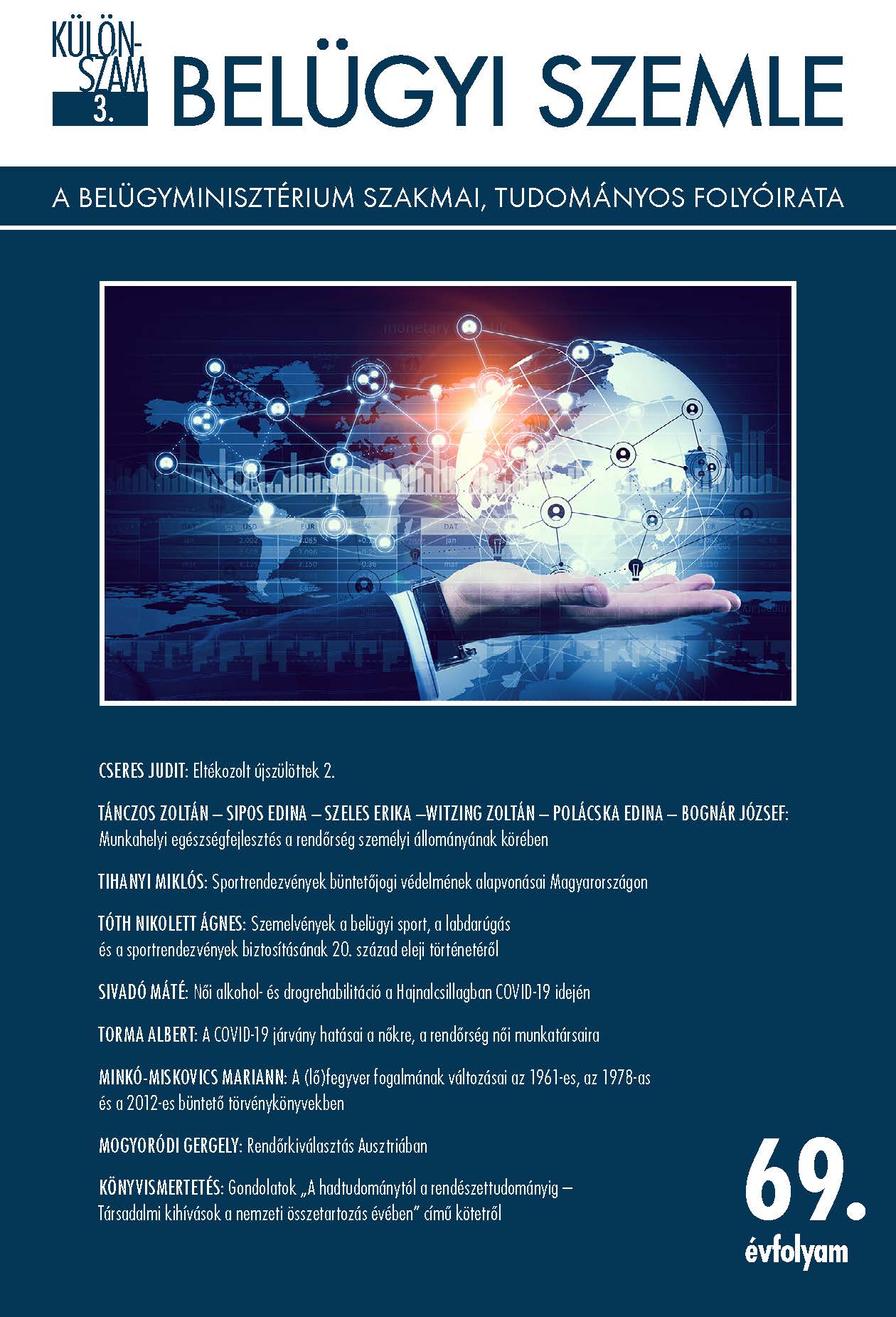Abstract
This article analyses the situation of mothers having committed infanticides of their newborns, looking at the causes along the path that led to the fatal event. Both in terms of concept and methods, the analysis repeats the practice of a predecessor work using official police documents dating to the period between 1981-1998. The present one, however, is based on data extracted from prosecutors offices’ files of cases, became known between 1998-2018. In addition to the original ones, the analysis aims at searching for traces of the historic events ensued during these 40 years. A societal change was, that affected also the perpetrators, that cohabitation became a legally recognised alternative to marriage. The increased share of this form of partnership indicates a similar increase both in the uncertainty in final commitments and in voluntary maintenance of relationships. The age pattern of fertility has changed, too. While most of the studied mothers conceive their unwanted pregnancy before the age of 25 in the first period, in the second period, an interesting, new pattern emerges with two “peaks” among the ages of 20-25 and 36-40. Pregnant mothers hide their pregnancy in both periods, so it becomes a high-risk pregnancy. To keep the secret from being discovered as much as possible, they give birth alone. Ultimately, keeping the secret of the newborn leads to the ensuing fatal chain of events. Looking at the second period, one experiences that the NGOs set up to help mothers with unwanted pregnancies can contribute significantly to the prevention of infanticides of newborns. In further articles, we shall explore other means of prevention. A forthcoming article will also explore conclusions drawn from case law of infanticides of newborns.

